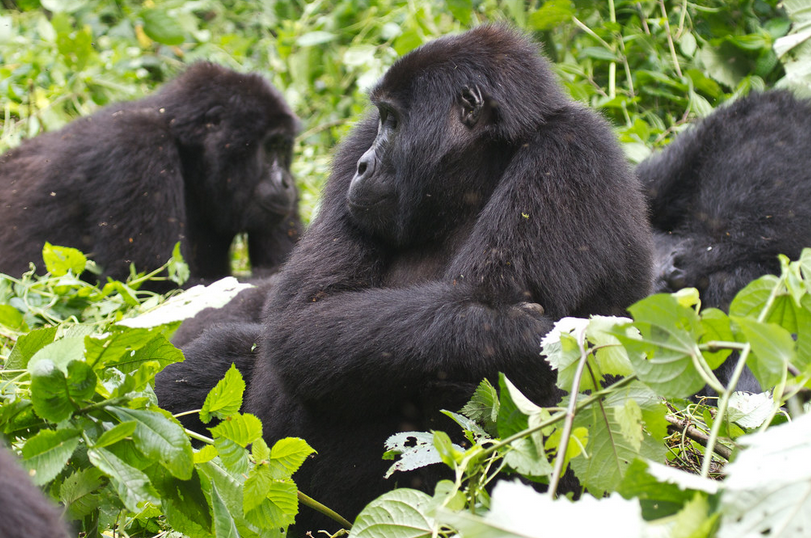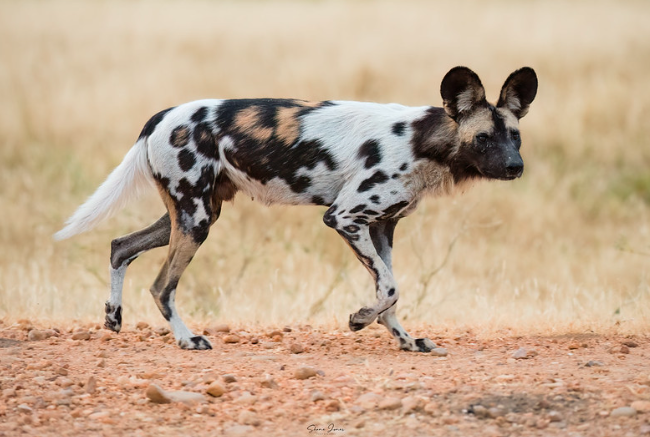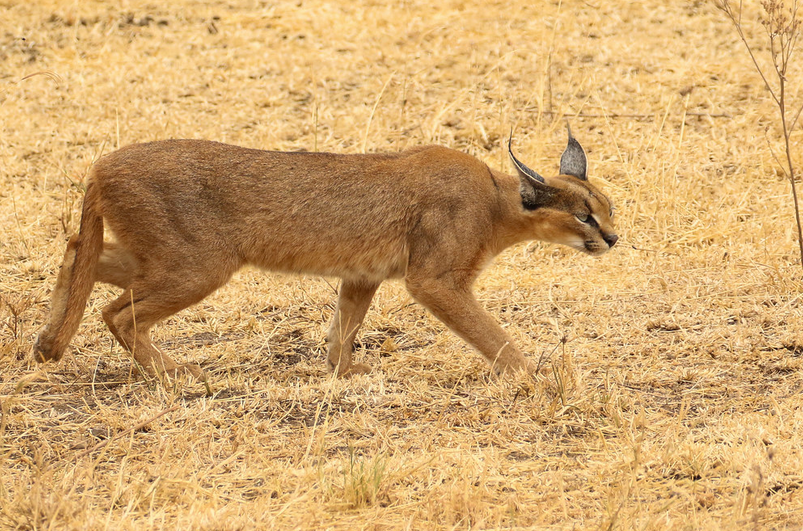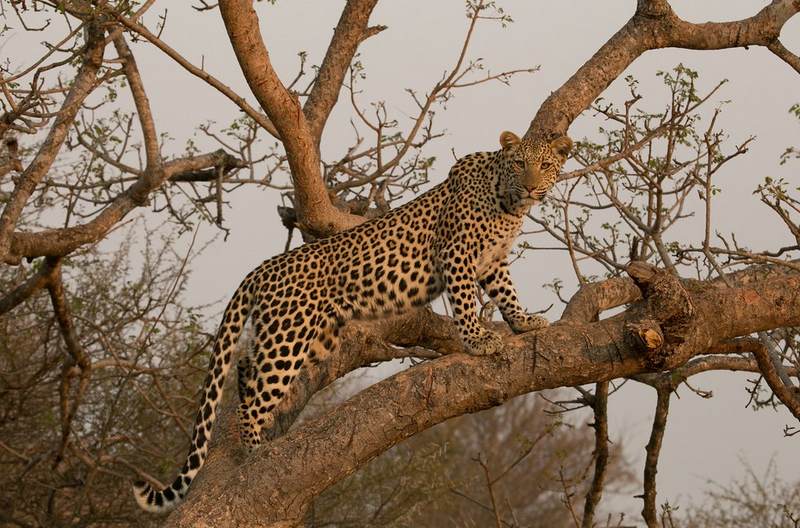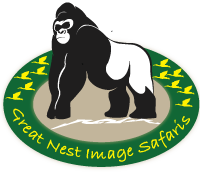Nyerere National Park
Park Overview:
Nyerere National Park: is the largest national park in Tanzania and also one of the world’s largest wildlife sanctuaries with a staggering size of 30,893km2 and hosts one of the world’s largest concentration of wildlife. The park has a great river known as Rufiji River and its Tanzania’s largest river and a home to animals such as Crocodile and hippopotamus also one of largest mangrove forests in the world located at its delta. The Park is also endowed with beautiful and scenic landscapes that add to the beauty of this majestic place. Nyerere National Park is home to several species of wildlife: such as lions, wildebeests, giraffes, zebras, hippopotamuses, rhinos, antelopes, hyenas, African wolves, and a large number of crocodiles in the Rufiji River and over 400 bird species that can all be viewed in their natural habitats. The park is also known for its most notably prolific population of African Wild Dogs, famous for the “Big Five’’ and some rare species of antelopes like Roan Antelope, Brindled Gnu, Lichtenstein hartebeest, and sable antelopes, Kudu and more.
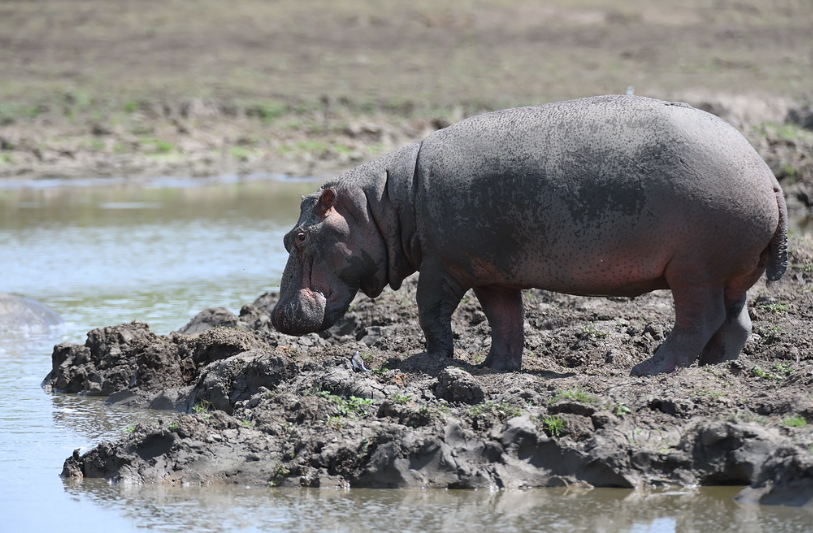
Nyerere National Park
What to do and see in Nyerere National Park
Attractions in Nyerere national park
Large Populations of African Wild dogs
In Nyerere national park, African hunting Dogs are thriving, unlike most of those elsewhere on the continent. In fact, the park has the last true stronghold for African hunting dog in Africa.
The Rufiji River
The Rufiji is East Africa’s largest river and it flows through the northern part of the Park. This river is slow moving, wide and has created a number of oxbow lakes in its northern flood plains, and they create a beautiful landscape of plains and woodlands interspersed with expanses of water. The might Rufiji with its renowned population of hippo and crocodile flows to Indian Ocean and it river been designated as a photographic zone and is a popular for tourists.
Rare Species of Antelopes
Apart from being very famous for elephants, rhinos and hippopotamus, Nyerere has also a vast range of game including: brindled gnu, Nyasaland gnu, sable antelope, eland, greater kudu, waterbuck, hartebeest, zebras, giraffe, reedbuck, warthog, spotted hyena, lion, leopard, and hunting dog, in addition to the largest populations of buffalo in Africa.
Continent Largest Population of Elephants
The largest concentration of elephants on the continent has been known for taking home in this park.
Highest Concentration of Hippos and Crocodile
Rufiji River in Nyerere National Park is home to plenty of hippos and Nile crocodiles.
Diverse birdlife
In Nyerere National Park, bird life is diverse and abundant with more than 440 species of birds that have been recorded. These species are found in sandbanks, oxbow lakes and channels are home to these species. The park has different bird species like the African Darter, Grey kestrel, Black chested snake eagle, African fish eagle, Addim’s stork, African Harrier Hawk, Coqui Francolin and much more.
Activities in Nyerere national park
Nyerere National Park offers a wide range of activities that give visitors opportunities to enjoy its beauty and some of these activities include;
Game Drives
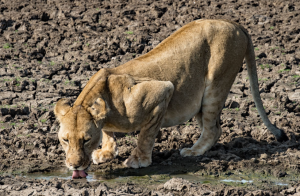
Game driving along the numerous small tracks is a popular way of enjoying the wildlife and the park has an amazing collection of wild animals, flora & fauna. During your game drive, you will enjoy the chance to spot a multitude of animals and these may include seeing the big five that is; the elephants, lions, rhino, leopard and buffalos and other animals like cheetah, giraffe, zebra and hippo. The drives last 2 to 3 hours per drive in the morning and afternoon hours, with morning timings usually scheduled from 6.30am to 9am and afternoon timings being 3.30pm to 6.30pm, though travelers may sometimes opt for a full day game drive generally from 10am to 4pm, in which case the excursion will include a packed picnic lunch to be enjoyed inside the National Park at a designated picnic spot, during lunch hours anytime from 12.30pm to 2.30pm.
Community tour
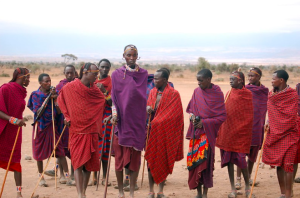
The Maasai, who populate vast areas of Northern areas of Tanzania is the dominant ethnic group surrounding most of the National Parks and Reserves in Tanzania. This nomadic, warrior tribe still retain many of their traditions as they live largely untouched by modern day civilization, in areas surrounding Selous Game Reserve. This one hour visit to a village visit is a chance to interact with the local people and get a glimpse into their culture, unique way of life and some of their customs and practices. The Maasai are known for their many unique cultural practices and traditions and some of these originate from their nomadic way of life.
Walking Safaris & Bush Walks
There are two types of nature walks offered while at Nyerere National Park. Nature walks within the camp and one outside the main reserve. These nature walks are preferably done early mornings or late in the afternoon when the sun is not too hot. The duration for these walks within the camp is approximately 45min-1hr and the rate ranges from USD 50 to USD 75 per person. The duration for walks outside the main reserve is approximately 2 1/2 to 3 hours covering a distance of 9-15 km and includes a packed breakfast/lunch depending on the timings and game drives en route to and from the walking safari location and the rate ranges from USD 90 to USD 150 per person.
Boating
Watching wildlife from the water is a beautiful and different way of game viewing. Crocodiles and hippos abound and elephants, waterbuck and buffalo spend a lot of time near the water, but a mass of other game including birds will be seen.
Boat cruise
The Rufiji River is Nyerere’s National Park striking feature, which provides an excellent natural setting for boat safaris and making it one of the few places in Africa where its possible to view wildlife and birdlife from water. During a boat safari, there is a great chance of spotting the hippos, crocodiles and plentiful of different bird species such as the African Fish Eagle, Malachite Kingfisher, Goliath Heron, African Skimmer and Boehm’s Bee-Eater. Monkeys (Blue Monkey, Savannah Baboon and Black and White Colobus Monkey) are often spotted in the trees along the banks of the river as well as Nile Monitor Lizards. The cost ranges from US$ 25 to US$ 30 per person for an hour ride based on a group size of 5 to 6 persons.
Nature walks
Depending on where the nature walks will be conducted, it is possible to see plenty of wildlife not to mention a rich diversity of Birds, flora and fauna. Walks are done by experienced and trained guides, and these guides often happen to be local people who have the advantage of being born and bred in the very region that you are exploring.
Hot Air balloon safaris
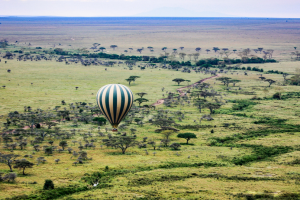
The balloons take off at the break of dawn, around 6am, gliding silently over the savannah grasslands below where you can spot a variety of wildlife. The flight lasts an hour and concludes with a ”Champagne Bush Breakfast” at the balloon landing site in the wilderness. The balloon is flown by a fully qualified and experienced Pilot and the balloons themselves are most often made by Cameron, a specialist hot air balloon manufacturer in Great Britain. The basket sizes vary and it is best to book in advance as space if typically limited to a maximum of 16 passengers per balloon, often less if flying with a smaller basket. The Hot Air Balloon price ranges from US$ 399 to US$ 490 per person depending on which camp or lodge you will fly from in Selous Reserve
Park fees for Nyerere national park
There are various park fees that are paid in the Nyerere National park and below is a list of some of the fees you will be expected to pay while on your safari. Note that the fees stated below are tentative to change anytime due to various reasons and it is best if you first contact your tour operator to find out the current park fees.
Entrance fees
Children below 5 years do not pay any Park fees while on a safari to the Park.
Non residents
Adults $50
Students $30
Children (5 to 15 years) $30
Residents
Adults $50
Students $30
Children (5 to 15) $30
East African Citizens
Adults Tsh5, 000
Students Tsh3, 000
Children (5 to 15 years) Tsh3, 000
Concession fees
These are paid if the visitor is staying within the National Park.
Non residents
Adults $25
Students $15
Children (5 to 15 years) $15
Residents
Adults $25
Students $15
Children (5 to 15 years) $15
East African citizens
Adults Tsh5. 000
Students Tsh3. 000
Children (5 to 15 years) Tsh3. 000
Other park fees that need to be paid include the following:
Vehicle fees, these highly depend on the type of vehicle you are driving and the heaviness of the weight being carried.
Getting there
The Park can be accessed by road or air
Road
Nyerere National Park can be accessed by road safari from either Dar es Salaam or Arusha. The road distance varies from 184 km to 230 km depending on which gate or entry point of Nyerere National Park you want to access. In terms of journey time, typically you want to allow for 6 hours for most Park entry gates such as Mtemere and Matembwe, and up to 6 to 6.5 hours for gates on the northern side of Selous Game Reserve.
Air
The park can also be accessed by air. There are daily scheduled flights from both Dar es Salaam and Zanzibar with a flight time of under an hour to a variety of different airstrips in Nyerere.
Where to stay in Nyerere National Park
Camping fees
Non residents
Public campsites children pay $20 and adults pay $30 per night
Private campsites children pay $30 and adults pay $50 per night
East African citizens
Public campsites children pay Tsh3, 000 and adults pay Tsh5, 000 per night
Private campsites children pay Tsh5, 000 and adults pay Tsh10, 000 per night
Residents
Public campsites children pay $20 and adults pay $30 per night
Private campsites children pay $30 and adults pay $50 per night
Accommodation in Nyerere national park
There are a lot of accommodation facilities that you can use and these can range between the tented lodges and the camps. Some of these are found inside the National park whereas others are outside the National Park.
Luxury
- Beho Beho lodge
- The Siwandu camp
- The sand Rivers Selous
- Selous Serena camp
Midrange
- Maji Moto
- The Kiba point safari lodge
- The Impala tented camp
Below are some of our tours to different destinations in the Country
1 Day Chimpanzee Ngamba Island Tour
1 Day Source of the Nile Jinja
2 Days Murchison falls national park
3 Days Lake Mburo national park safari
3 Days Murchison falls national park
3 Days Queen Elizabeth national park
4 Days Kidepo savannah wildlife safari
5 Days Queen & Bwindi Adventure safari
6 Days Uganda wildlife & primate safari
7 Days Uganda Adventure Safari
8 Days Gorilla & Wildlife safari
10 Days Gorilla & Adventure safari
14 Days Explore Uganda Adventure Safari
Request a Quote
Featured Tour Updates
Permit cost for gorilla trekking in Uganda
Permit cost for gorilla trekking in Uganda Permit cost for gorilla trekking in Uganda : Gorilla trekking is one...
The African Wild Dog
The African Wild Dog The African wild dog: (Lycaon pictus) also known as the African painted dog or Cape...
The Caracal (Felis caracal)
The Caracal (Felis caracal) The Caracal (Felis caracal): is a medium-sized wild cat that can run up to 50...
African Leopards (Panthera pardus)
African Leopards (Panthera pardus) African Leopards (Panthera pardus) : are one of the most feared but respected animals in...


